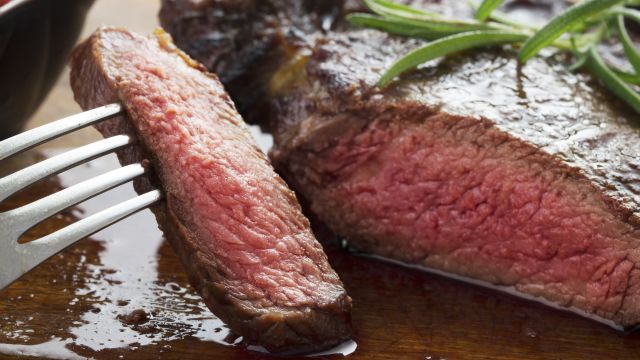Lots of heart-conscious consumers and waist watchers have recently rehabbed their steak knives, having found that -- hang onto your knife sharpener -- eating a little red meat doesn't necessarily put you on the fast track to Fat Central. It's not the meat itself; it's the aging, artery-clogging, cholesterol-soaring, saturated fat in meat that you want to minimize. Here's how:
1. Select the best. When you're shopping for meat, choose cuts labeled USDA Select grade; they have less fat than Choice and Prime.
2. Go lean. Choose packages labeled "lean" or "extra lean" whenever possible. Lean means the meat has fewer than 8.5 grams of fat per 3-ounce serving; extra lean has fewer than 4 grams.
3. Stay on the grass. Try to buy meat labeled "grass fed" or "pasture raised." It may have 25% to 50% less fat, fewer calories, and more heart-healthy omega-3s than regular grain-fed meat. (It also suggests the animal was raised humanely.)
4. Slice away. Trim external fat before cooking, and use that well-sharpened knife to remove any fat that's still there once it's on your plate. Doing so can slash fat intake by as much as half.
5. Keep it separate. Broil, grill, or roast meat on grills or pans that drain away fat.
6. Towel off. To remove both grease and calories, blot meatballs and burgers with paper towels after cooking.
7. Know your limits. Minimize meat-centered meals. RealAge recommends no more than one serving of red meat a week. One serving, says the USDA, is the size of a deck of cards, or about 3 ounces.
How big is the payoff when you lose the fat but keep the meat? How would you like to see fewer candles on your birthday cake next year? Eating a low-fat diet -- and eating healthful unsaturated fats when you do eat fat -- can make your RealAge as much as 6 years younger.
Get even more tips on finding the slimmest, trimmest cuts.






